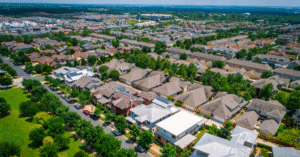The idea of a 50-year mortgage is gaining attention. It would let a borrower take out a home loan that lasts five decades—rather than the more common 30 years. It’s being discussed as one way to help people who want to buy a home but find monthly payments too high.
The hope: With more time to pay it back, the monthly payment is lower, making homeownership look easier to reach.
But there’s a flip side: You’ll pay more interest over the full time. You’ll build less home equity early on. You might still face tough approval rules. These risks are drawing a lot of professional scrutiny.
What is a 50-year mortgage?
Here’s how to think about a 50-year mortgage in simple terms:
- A regular 30-year fixed mortgage means you pay back your loan over 30 years (360 monthly payments).
- With a 50-year mortgage you’d spread those payments out over 50 years (600 monthly payments).
- Because the payments are spread out more, the monthly payment is smaller, all else equal.
But because you’re paying for longer, the total interest cost goes up. Also, many early payments go to interest, so you build home equity more slowly.
Below is a simplified example. Keep in mind actual numbers vary depending on the rate, down payment, taxes, insurance, and local market. The rates we’ve included are for example only. Your actual rate depends on market conditions and underwriting.
30-year vs. 50-year: Sample comparison
Feature | 30-Year Loan | 50-Year Loan |
Loan amount | $400,000 | $400,000 |
Interest rate ^† | 6.75% | ~7.00% (or possibly higher) |
Monthly payment (principal + interest only) | ≈ $2,595 | ≈ $2,415 |
Approximate total paid over life of loan | ≈ $934,000 | ≈ $1,449,000 |
Extra interest cost with 50-year option | — | +$515,000 |
The Pros & Cons of a 50-Year Mortgage
✅ Possible Benefits
- Lower monthly payments might make a home more affordable now.
- Could open the door for first-time homebuyers who are priced out by a 30-year payment.
- Might offer more flexibility if you plan to stay long term and have stable income.
⚠️ Possible Drawbacks
- You may pay more interest overall since the loan is spread over a longer period.
- Equity builds more gradually, which means it could take a little longer to reach major ownership milestones.
- If home prices fluctuate, your equity position could change along the way.
- A longer term may extend your mortgage into later life stages, so it’s worth reviewing how it fits with your long-term financial plans.
- Qualification standards may stay the same, so while the payment might be lower, approval still depends on factors like income, credit, and debt-to-income ratio.
What We Don’t Know Yet
Since the 50-year mortgage is still mostly a proposal, there are unknowns:
- Rate difference: Experts expect a 50-year loan rate to be perhaps 0.4%-0.6% higher than a 30-year loan.
- Underwriting and approval rules: Many current rules (like those under the QM—Qualified Mortgage—standard) assume a 30-year term. A 50-year term may fall outside those safe-harbors.
- Supply and pricing impact: If more people qualify due to lower payments, will more demand push home prices up? If so, the affordability benefit may fade.
- Availability & targeting: Will 50-year loans be available to everyone, or only certain buyers/property types?
- What happens when you sell or refinance early? If you don’t stay in the loan for many decades, how does the slow equity build-up affect your position?
Questions Your Loan Officer Should Help You Answer
Keep in mind that a 50-year mortgage is not currently available. But if it were to become available, consider asking your loan officer:
- How much will my monthly payment go down with a 50-year term vs a 30-year term, given my loan amount, down payment, and interest rate?
- How much more will I pay in interest overall (and how long until I build “meaningful” equity)?
- Does a 50-year term improve my approval odds, or is qualification still tied to income, credit, debt-to-income the same way as a 30-year loan?
- If I sell or refinance in 5, 10, or 15 years, what does the equity picture look like compared to a 30-year term?
- Are there other strategies that might give me a similar monthly payment benefit with less long-term risk (for example, a buydown, adjustable-rate option, or different term)?
- What are the long-term risks – e.g., if rates rise, if property taxes/insurance rise, if I retire while still having the loan?
Bottom Line:
A 50-year mortgage could make owning a home look more affordable in terms of monthly payment. But it is not a magic bullet for housing affordability. Sure—monthly payments may go down. But the cost of that is longer commitment, much more interest paid, and slower equity growth.
For many first-time homebuyers, the possibility of making homeownership fit a tighter monthly budget is attractive. However, it’s only helpful if the overall financial picture (rates, approval, equity growth, resale/exit strategy) is well-understood and fits the borrower’s goals.
At NewFed Mortgage, we believe in helping our borrowers see the full picture. Talk with one of our experienced loan officers to run real-world numbers and compare what a 30-year vs a 50-year (or other term) loan means for you.







